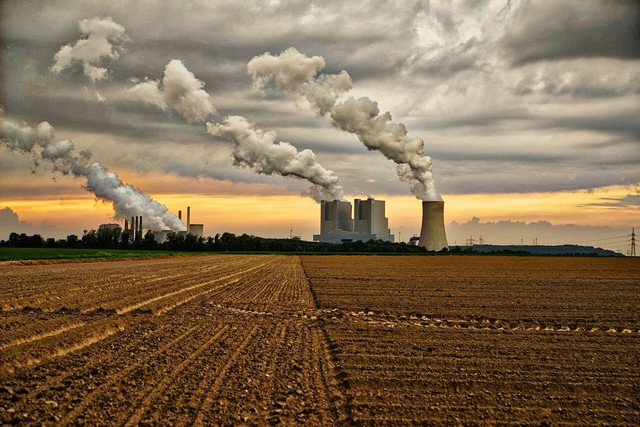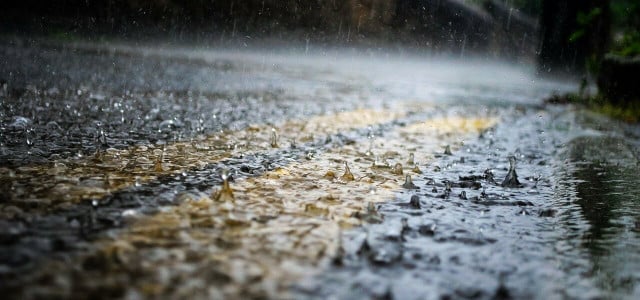Acid rain may seem like a phenomenon of the past, but it is still a problem in many parts of the world, destroying entire ecosystems and damaging buildings and other structures. But what causes acid rain to begin with? Here’s what you need to know about acid rain and what you can do to help stop it.
In North America and Europe, acid rain is mostly perceived as a problem of the past. If you haven’t experienced it yourself, you may still have heard about the time when acid rain was one of the most pressing environmental problems of the day. In this article, you can read all about the causes and effects of acid rain and why it remains an urgent topic.
What Is Acid Rain?

Acid rain generally refers to any form of precipitation that contains high levels of acid. Another more comprehensive term is “acid deposition,” which describes the different ways in which acidic particles may reach earth. There are two main types of acid deposition:
- Wet Deposition: Wet deposition occurs when sulfuric and nitric acid that is formed in the atmosphere comes down with rain, snow, sleet, hail, or fog.
- Dry Deposition: Dry deposition occurs when acidic particles and gases that can be found clinging to surfaces are washed down from these surfaces (buildings, for instance) by rain into the ground.
How is Acid Deposition Measured?
Different authoritative sources offer disparate information on the exact pH-levels of acidic rain or acid deposition, with estimates ranging anywhere from 3.0 to 5.6. To better understand these numbers, note some of the basics of measuring acidity and alkalinity: The pH-scale ranges from 0 (acidic) to 14 (alkaline/basic). The lower the pH, the more acidic the substance is. A substance with a pH of 7 is considered neutral – pure water is one example. “Regular” rain tends to measure a bit on the acidic side and has a pH of about 5.6, whereas acid rain measures significantly lower on that scale, around 4.
How Does Acid Rain Form?



If you weren’t around in the 1970s or 80s, acid rain may seem like an environmental problem that we have put behind us. However, even though acid rain is not as frequent in North America and Europe these days, some of its effects linger. Moreover, it is still a pressing issue around the world, even in places that are far away from the countries that have been the primary sources of acid rain to begin with. To make sense of these developments, let’s first turn to the causes of acid rain.
How is Acid Rain Formed?
Acid rain is caused primarily by sulfur dioxide (SO2) and nitrogen oxide (NOx) emissions. When these gases react with the moisture in the atmosphere, sulfuric and nitric acids form. Wind may transport these acid particles over long distances before they come down as wet or dry deposition.
As noted by the US Environmental Protection Agency (EPA), a small portion of these emissions comes from natural sources, such as erupting volcanoes. However, SO2 and NOx, the driving factors of acid rain, come mostly from man-made sources. The largest source of these emissions is the burning of fossil fuels, especially in coal-burning power plants, along with fuel combustion from cars and other vehicles, and pollutants emitted by oil refineries and other industries (USGS).
What are the Effects of Acid Rain?
Acid rain takes a serious toll on the environment. Forests and aquatic areas such as streams, rivers, and lakes are especially at risk, as is wildlife.
In many areas, the environment is able to adapt to acid rain to some extent. The reason for this is that basic compounds often contained in soil (mainly in naturally occurring limestone) balance out some of the acidity. However, in areas that lack this balancing capacity, acid rain robs essential nutrients from the soil and leaches aluminum from clay particles (USGS). This prevents the growth of trees and causes damage to their roots, which in turn causes the water to drain faster from the soil. Leached aluminum is carried into rivers and other aquatic habitats, turning them into a toxic environment that threatens marine life.
As National Geographic has stated, though some species can tolerate acidic waters better than others, “in an interconnected ecosystem, what affects some species eventually affects many more throughout the food chain, including non-aquatic species such as birds”.
Acid rain poses a severe threat not only to the environment and our natural heritage but also to cultural landmarks, as it damages surfaces made from certain stones or concrete. The acidity can cause dissolution and alteration (USGS), which can lead to irreparable damage or very high costs for maintenance and restoration.
Acid Rain: What Has Been Done About It and What Still Needs to Be Done?



The causes of acid rain outlined above were much more pervasive in the past before new pollution-reducing legislation such as the Clean Air Act (1970) was introduced in the United States. Over the years, many other countries also significantly reduced the emission of sulfur from various sources, for example, by retrofitting power plants.
Can we call this development an environmental success story? Not just yet. Although legislative efforts have effectively reduced acid rain, there are still high concentrations of acid to be found in waters and soils in many regions and sulfur emissions continue to be a global environmental problem.
Here’s what you can do:
- Check out our guide on conserving energy: 10 ways to save electricity
- Think about other ways to reduce your carbon footprint. One simple yet effective way to get started is buying food that is produced locally and only when it is in season in your region
- Another way is to take a look at your means of transportation. Try to choose an environmentally-friendly option if and whenever possible. Can you walk or ride a bike to your destination? Is there public transportation you can choose instead of going by car? If you can only take the car, can you arrange to carpool?
- Raise awareness of carbon emissions in the US and what we have to change
- Check with your energy provider to see if you can choose a supplier that offers renewable energy.
Read more:
- Environmental Organizations: 8 NGOs and Non-Profits Worth Supporting
- Climate Change Denial: How to Stand Up To Skeptics
- 8 Things You Can Do to Save the Ocean
Do you like this post?






